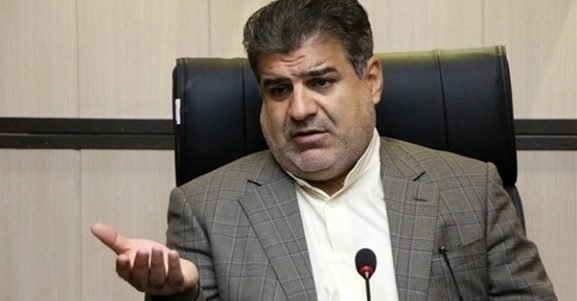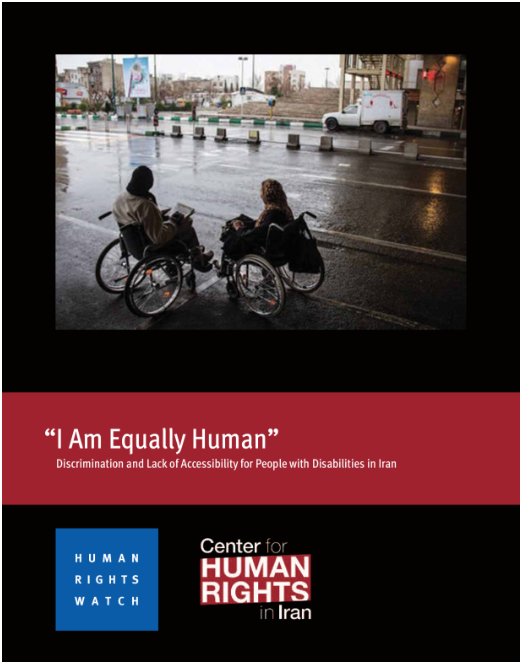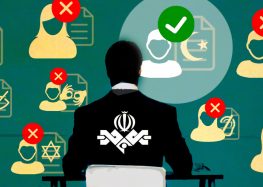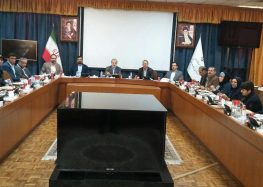Autistic Children in Iran Segregated and Punished for Having Learning Disabilities

Abdolreza Fouladvand, the head of the Education Department in Tehran
Responding to news of an autistic child being treated inhumanely in a school, Iranian officials blamed the child and the parents for not putting their kids in a learning institute for “special” children.
But according to the testimonies of dozens of parents of autistic children in Iran, the “special” schools are poorly equipped to care for and support their children’s learning needs, due to employing poorly trained staff and lack of resources.
On February 12, 2019, after the father of an autistic boy said school administrators had detained his son as punishment, Abdolreza Fouladvand, the head of the Education Department in Tehran, told the state-funded Iranian Labor New Agency (ILNA) that an official investigation was underway, adding: “Based on information we have received, the parents of the other students are displeased with the autistic student.”
“A student who has autism should not be studying in a normal school,” continued Fouladvand. “The parents of this student had previously been told that they should take their child to a school for special students but unfortunately they did not listen.”
Fouladvand criticized the presence of an autistic student in a “normal” school in Tehran even though Iran is party to the UN’s Convention on the Rights of Persons With Disabilities (CRPD), which states education systems should allow all students, regardless of physical, intellectual or psychological differences, to study alongside each other and enjoy the same services and support in accordance with their special condition.
“Special” Schools Poorly Equipped to Educate Children With Disabilities

The 72-page report, “‘I Am Equally Human’: Discrimination and Lack of Accessibility for People with Disabilities in Iran,” documents the everyday barriers people with disabilities meet when going to government offices, healthcare centers, and when using public transportation.
There are differing estimates on the number of autistic individuals in Iran, which range from 320,000 to 700,000. However, only about 8,000 of them have been officially recognized and registered by the State Welfare Organization (SWO), which is charged with provided services and support to people living with disabilities in Iran.
Statements by Iran’s health officials indicate that only a small portion of the country’s autistic individuals receive state support. On February 28, 2018, Hossein Nahvinejad, the SWO’s director for rehabilitation services, admitted that the organization’s staff was insufficiently trained in recognizing and working with autistic people and added that there is a need to institute and conduct standardized tests to diagnose autistic children.
He added that only about 3,000 autistic children receive the SWO’s rehabilitation services and 3,000 others are attending schools for special children.
Speaking about the punishment of autistic children in schools, the mother of a 16-year-old girl with autism told the Center for Human Rights in Iran (CHRI): “Even though my daughter was going to a school for special students, the teachers and school officials still often used fear to control her behavior. Autistic children are very sensitive to loud sounds and changes in their surroundings, so punishments, intimidation and yelling will stress them out even more.”
“These people should get special training for how to teach and communicate with autistic children,” added the source who requested anonymity for fear of reprisals by security agents for speaking to a media outlet about a politically sensitive issue. “Obviously, a teacher can’t teach when there are lots of students with autism in the classroom and they start acting out and bothering other students. The only thing these teachers are able to do is intimidate and punish them in an attempt to calm them down.”
Regarding her daughter’s experience in the “special” school, the mother said: “In my daughter’s school, they had put students with different disabilities in one class. For instance, there were two teachers for a class with eight students: two of them had physical disabilities, two were deaf, two had psychological disabilities and two were autistic.”
She continued: “Each of these students needed to be taught in their own special way but the teachers don’t have the time or proper training to meet their needs. Therefore you will often have tension between the students themselves and between the teachers and the students as well. There has to be a teacher for one, or at most two, autistic students in order to be able to provide proper education.”
She added: “Last year I stopped enrolling my daughter at that school because of these problems and I have been educating her myself with the help of a private tutor. In addition, I take her to rehabilitation sessions and other classes and pay for them myself. Certainly many families are not able to afford all these resources.”
Based on Article 24 of the CRPD, member states “shall ensure an inclusive education system at all levels and lifelong learning” on the basis of equal opportunity.
In its general comment on Article 24, the Committee on the Rights of Persons with Disabilities stated all children have the right to inclusive education, which children in Iran are being denied:
“The right to inclusive education encompasses a transformation in culture, policy and practice in all formal and informal educational environments to accommodate the differing requirements and identities of individual students, together with a commitment to remove the barriers that impede that possibility. It involves strengthening the capacity of the education system to reach out to all learners. It focuses on the full and effective participation, accessibility, attendance and achievement of all students, especially those who, for different reasons, are excluded or at risk of being marginalized. Inclusion involves access to and progress in high-quality formal and informal education without discrimination. It seeks to enable communities, systems and structures to combat discrimination, including harmful stereotypes, recognize diversity, promote participation and overcome barriers to learning and participation for all by focusing on well-being and success of students with disabilities. It requires an in-depth transformation of education systems in legislation, policy, and the mechanisms for financing, administration, design, delivery and monitoring of education.”
Therefore, “Placing students with disabilities within mainstream classes without accompanying structural changes to, for example, organization, curriculum and teaching and learning strategies, does not constitute inclusion. Furthermore, integration does not automatically guarantee the transition from segregation to inclusion.”






